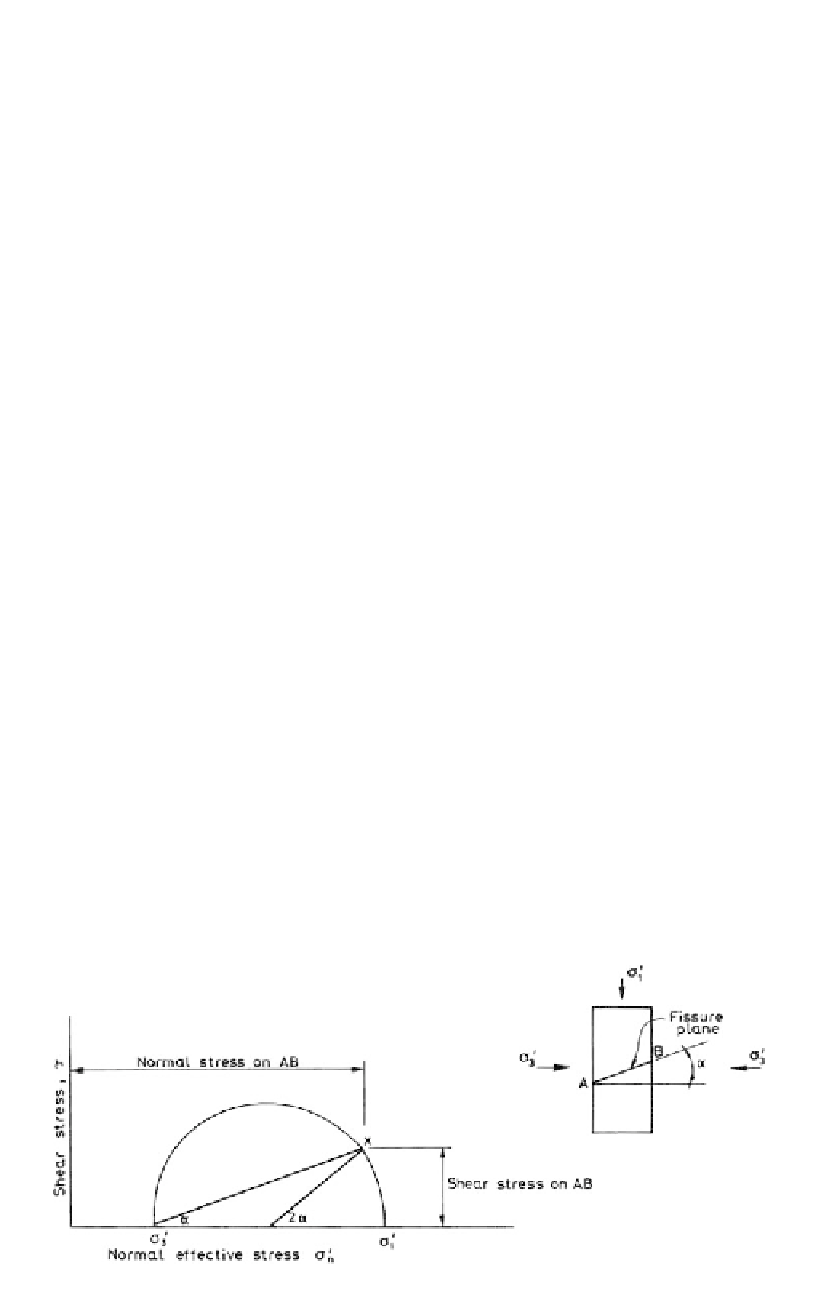Environmental Engineering Reference
In-Depth Information
fissures are oriented in such a way that failure will occur along the fissures, rather than
the soil substance.
In practice this means (Rowe, 1972) that large diameter samples - at least 100 mm, and
preferably 250 mm diameter are needed. This is usually impractical because even if the
samples can be obtained by block sampling, the test duration would be very long.
Hence it is usually more practicable to determine the fissure strength, either by judge-
ment, from the nature of the fissures, and the peak, fully softened and residual strength, as
described above, or by triaxial testing, and then use the orientation and continuity of the
fissures to assess the mass strength. The strength of the fissure surfaces can be determined
by the procedure described by Thorne (1984). This can be applied to block samples or thin
walled tube samples and consists of:
-Test 75 mm diameter samples, being the maximum size which can readily be obtained
with thin wall samples tubes;
-
Carefully examine the samples before and after testing to determine whether shearing
has occurred on a fissure surface or through the soil substance, and note the orienta-
tion of the failure surface;
-
Determine the shear stress on the fissure surface from the Mohr's circle using the con-
struction shown on Figure 6.31;
-
Plot the strengths on the fissure surfaces in this manner to determine the design fissure
strength (as a p
-q plot of points).
Thorne (1984) shows that whether a sample fails on a fissure depends on the orienta-
tion of the fissure and the magnitude of the stresses.
Figure 6.32
illustrates this.
For Figure 6.32a 60° fissure: a, b and c all fail on fissure.
For Figure 6.32b 25° fissure: Circle a fails through substance.
For fissured soils which can be sampled by block sampling from test pits, shafts or other
excavations, it is often practical to test the actual fissure surface in a direct shear test to
obtain the fissure strength.
On a practical note, it is very unusual to be able to see the fissures in soil samples prior to
testing, so it is usually necessary to test a large number of samples to obtain sufficient sam-
ples which fail on fissure surfaces not intersecting the end plates. Some fissured samples tend
to fall to pieces on ejection from a sample tube. This can be overcome to a degree by cutting
down the sides of the sample tube, so the sample can be lifted out, rather than forced out of
the end in the normal manner.
Figure 6.31.
Resolution of stresses on failure surface.

